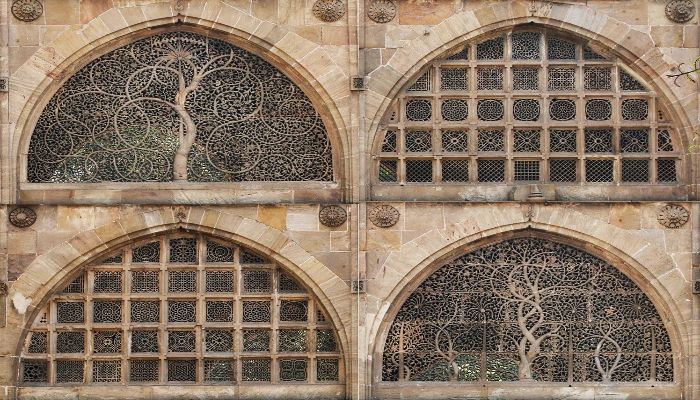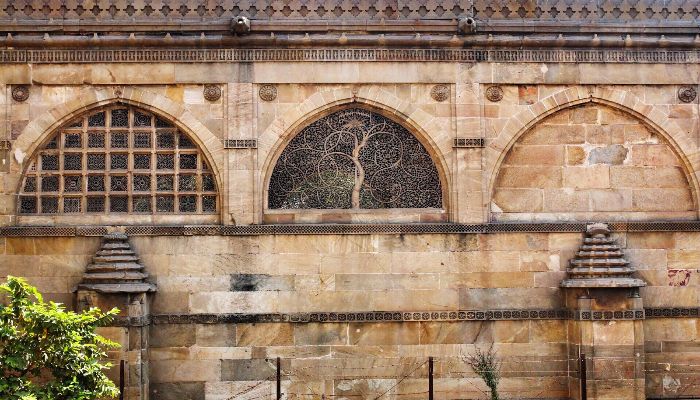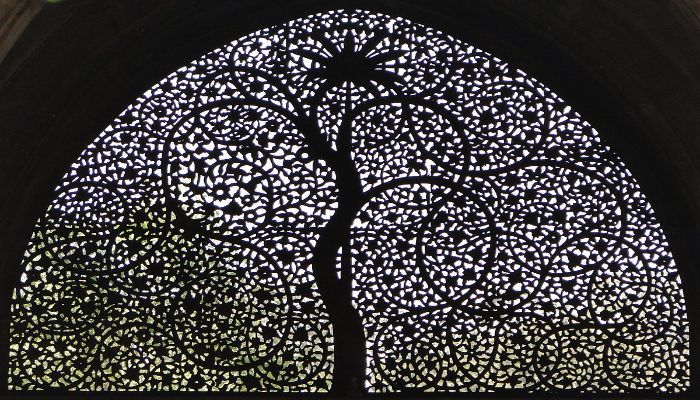Sidi Saiyyed Mosque
The Sidi Saiyyed Mosque, popularly known as Sidi Saiyyed ni Jali locally, built in 1572 AD, is one of the most famous mosques of Ahmedabad. As attested by the marble tablet fixed on the wall of the mosque, it was built by Sidi Saiyyed in the retinue of Bilal Jhajar Khan, general in the army of the last Sultan Shams-ud-Din Muzaffar Shah III of the Gujarat Sultanate.
The mosque was built in the last year of the existence of Sultanate of Gujarat. The mosque is entirely arcuated and is famous for beautifully carved ten stone latticework windows (jalis) on the side and rear arches. The rear wall is filled with square stone pierced panels in geometrical designs. The two bays flanking the central aisle have reticulated stone slabs carved in designs of intertwined trees and foliage and a palm motif. This intricately carved lattice stone window is the Sidi Saiyyed Jali, the unofficial symbol of city of Ahmedabad and the inspiration for the design of the logo of the Indian Institute of Management Ahmedabad.
The central window arch of the mosque, where one would expect to see another intricate jali, is instead walled with stone. This is possibly because the mosque was not completed according to plan before the Mughals invaded Gujarat.
Address
Sidi Saiyyed Mosque, Opposite Electricity House Gheekanta, Lal Darwaja, Ahmedabad, Gujarat 380001


